Gallery
Images of Richmonds work:
- Canadian Light Railway Engines
- Canadian Railway Construction in France
Leonard Richmond (1889-1965) was a Somerset born British watercolour landscape artist who spent a large part of his career in Canada and was noted for his railway posters.
During World War I Richmond served as an official war artist for Canada. In the 1920s and 1930s he produced posters promoting the Canadian Pacific Railway plus the Southern and Great Western Railways in Britain. Richmond was awarded several prizes including the Tuthill Prize (1928) at the Chicago International Watercolour Exhibition and a silver medal (1947) at the Paris Salon. Examples of his pictures are held by several public collections in Britain including: The British Museum; All Souls College, Oxford; the National Railway Museum; The National Trust (Cliveden); Newport Museum and Art Gallery; and Penlee House Gallery and Museum. [1] [2]
Images of Richmonds work:

Joseph Mallord William Turner, known in his time as William Turner, was an English Romantic painter, printmaker and watercolourist. He is known for his expressive colouring, imaginative landscapes and turbulent, often violent marine paintings. He left behind more than 550 oil paintings, 2,000 watercolours, and 30,000 works on paper. He was championed by the leading English art critic John Ruskin from 1840, and is today regarded as having elevated landscape painting to an eminence rivalling history painting.
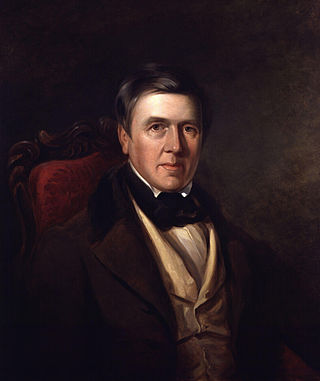
David Cox was an English landscape painter, one of the most important members of the Birmingham School of landscape artists and an early precursor of Impressionism.
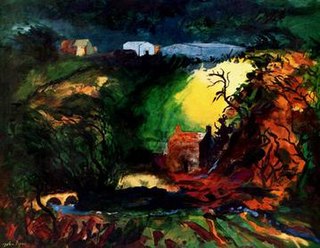
John Egerton Christmas Piper CH was an English painter, printmaker and designer of stained-glass windows and both opera and theatre sets. His work often focused on the British landscape, especially churches and monuments, and included tapestry designs, book jackets, screen-prints, photography, fabrics and ceramics. He was educated at Epsom College and trained at the Richmond School of Art followed by the Royal College of Art in London. He turned from abstraction early in his career, concentrating on a more naturalistic but distinctive approach, but often worked in several different styles throughout his career.
Graham Vivian Sutherland was a prolific English artist. Notable for his paintings of abstract landscapes and for his portraits of public figures, Sutherland also worked in other media, including printmaking, tapestry and glass design.
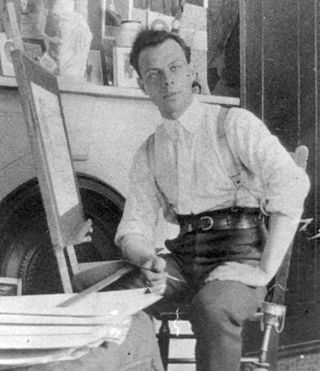
David Milne was a Canadian painter, printmaker, and writer. He was profoundly different from most of his Canadian art contemporaries ‒ especially Tom Thomson and the Group of Seven.

Dame Laura Knight was an English artist who worked in oils, watercolours, etching, engraving and drypoint. Knight was a painter in the figurative, realist tradition, who embraced English Impressionism. In her long career, Knight was among the most successful and popular painters in Britain. Her success in the male-dominated British art establishment paved the way for greater status and recognition for women artists.

Kenneth Howard OBE RA was a British artist and painter. He was President of the New English Art Club from 1998 to 2003.
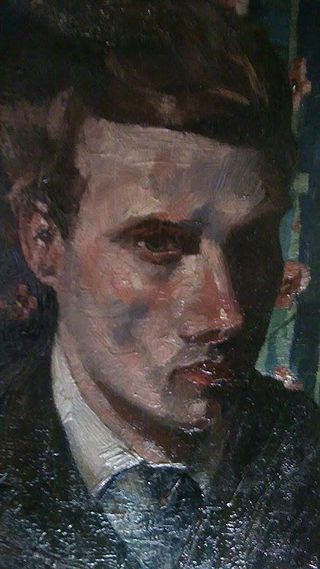
John Quinton Pringle was a Scottish painter, influenced by Jules Bastien-Lepage and associated with the Glasgow Boys.

Norman Wilkinson was a British artist who usually worked in oils, watercolours and drypoint. He was primarily a marine painter, but also an illustrator, poster artist, and wartime camoufleur. Wilkinson invented dazzle painting to protect merchant shipping during the First World War.
Cyril Edward Power was an English artist best known for his linocut prints, long-standing artistic partnership with artist Sybil Andrews and for co-founding the Grosvenor School of Modern Art in London in 1925. He was also a successful architect and teacher.
Claude Henry Buckle R.I., Royal Society for Marine Artists (R.S.M.A.) was an English painter well known for railway posters, carriage prints and for oil and watercolour paintings.

Philip Connard, was a British painter known particularly for his paintings of decorative landscapes. Connard rose from humble origins to become an eminent artist in oils and watercolours whose commissions brought him royal recognition.

Emily Mary Bibbens Warren was a British Canadian artist and illustrator. She worked in ink, watercolour, oil, gouache, and graphite. Her favourite subjects included gardens, landscape, and interiors and exteriors of buildings. She is known for sunlight beaming through stained glass windows.

Thomas Hearne was an English landscape painter, engraver and illustrator. Hearne's watercolours were typified by applying a wash of subtle subdued colours over a clear outline in fine brush, pen or pencil. His techniques were studied by younger artists such as Thomas Girtin and J. M. W. Turner.
Kenneth Steel was a British painter and engraver, noted for his works of art in watercolor. As an accomplished draughtsman his work is noted for its intricate detail, which can be best seen in his landscapes views and street scenes, many of which were reproduced as designs for railway carriage prints and station billboard posters. Kenneth Steel was born in Sheffield, England to G. T. Steel, an artist and silver engraver. His elder brother, George Hammond Steel (1900–1960) was a successful landscape painter. Both brothers studied at Sheffield College of Art under Anthony Betts. During the 1920s Kenneth Steel studied briefly under the landscape artist, Stanley Royle, throughout their careers both artists remained close friends. Kenneth Steel supported and encouraged fellow Sheffield etcher, Leonard Beaumont. During World War II, both his mother, Annie and wife, Olive died during 'the Sheffield Blitz', victims of German bombing raids on the city during December 1940. His house took a direct hit resulting in the loss of much his work, designs and engraved plates. Throughout the late 1930's and early 1940s he wrote several important articles on the art of engraving, pencil drawing and watercolour technique for the art periodical, 'The Artist'.
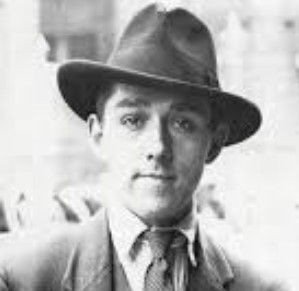
George William Bissill was a British miner, painter, and furniture designer. Bissill's paintings are held in a number of important public collections, including the Tate Gallery, National Museum of Northern ireland and the Manchester Art Gallery. Bissill was known for his landscapes and figurative paintings in oil, watercolour and woodcuts.
Leonard William Joseph McComb was a Scottish artist. He described his work as visual abstractions after nature. He was very interested in the detail in nature and declared that everything he drew or painted, whether a portrait head, flower, landscape, still life, or breaking sea wave, was, for him, a portrait.
Richard Barrett Talbot Kelly (1896–1971), MBE, MC, RI, known to friends and colleagues as 'TK', was a British army officer, school teacher, and artist, known especially for his watercolour paintings of ornithological subjects.

C. J. Way was an English artist who travelled to North America to discover scenery for his landscape and seascape paintings. Besides scenic views of Canada and the United States, his subjects included England, Wales, Italy and the Swiss Alps. Initially a watercolour artist, he began to work in oils in the 1870s.
Gyrth Russell was an Anglo-Canadian artist best known for his marine paintings and work as a war artist during the First World War.